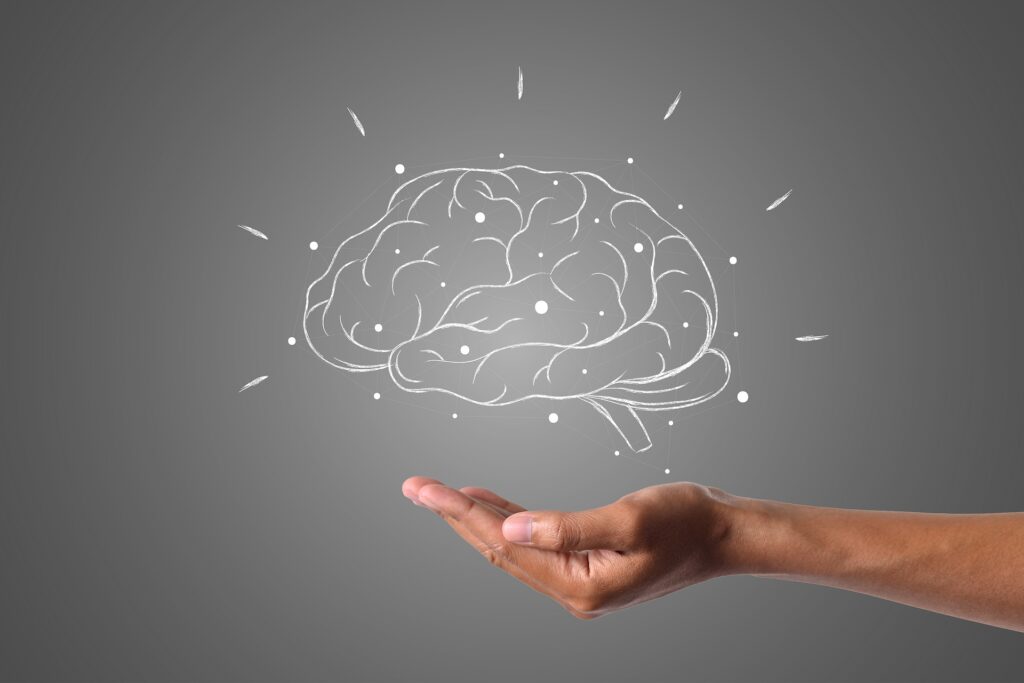The most important and complex organ of the central nervous system that controls all the processes of the human body is the brain. The human brain consists of a huge number of neurons, measured in billions, which are connected by even more synaptic connections.
Despite significant progress in the study of the brain in recent years, much of his work is still a mystery. The functioning of individual cells is fairly well explained, but understanding how the brain functions as a whole as a result of the interaction of thousands and millions of neurons is only available in a very simplified form and requires further in-depth research.
The brain weighs one and a half kilograms and contains 100 billion neurons (this is 15 times the population of the globe). In addition, the brain has glial cells, which are ten times more numerous than neurons. Previously, it was thought that glial cells only hold neurons close to each other. The latest research, however, shows that glial cells, which the human body possesses in greater numbers than any other, are crucial for the chemical transmission of information and thus for all processes in the brain, as well as for long-term memory.
Why Do We Need Brain?
As the main organ of the central nervous system, it controls and regulates most of the functions of the human body. From vital functions, such as breathing or heart rhythms, sleep, hunger, thirst, to higher functions: reasoning, memory, attention, emotional control, and behavior.
The brain regulates all the actions we perform in our dreams and in reality: when we breathe or swallow, look, listen, touch or taste something, read or write, sing or dance, think in silence or talk, love or hate, walk or run, plan or act spontaneously, imagine or create, etc. Let’s make a list of the main functions of the brain:
- Control of vital functions: control of body temperature, blood pressure, heart rate, breathing, sleep, nutrition;
- Reception, processing, integration and interpretation of all information received from the senses: sight, hearing, taste, touch and smell;
- Control of body movements and postures: walking, running, speaking, standing still;
- It is responsible for our emotions and behavior;
- It allows us to think, reason, feel, and be;
- Controls higher cognitive functions: memory, learning ability, perception, executive functions.
Brain Parts
All vertebrates have a brain, which consists of the following sections:
- The large or terminal brain, consisting of cortical and subcortical structures. The cortical structures or cortex of the brain are divided into several lobes: frontal, parietal, cingulate, occipital, temporal, and insular. In addition, these lobes are divided in half, into two hemispheres, the right and left. Subcortical structures include structures located under the cerebral cortex, such as the corpus callosum, which unites both hemispheres, the thalamus, basal ganglia, amygdala, hippocampus, and mastoids.
The brain is responsible for integrating all the information coming from the senses and for organizing the response to it. Controls emotions, motor functions, and all higher cognitive functions: reasoning, emotional expression, memory, and learning ability.
- The cerebellum: It is the second largest part of the brain, responsible mainly for controlling movement and body postures, but also for a number of cognitive functions.
- The hypothalamus and pituitary gland are responsible for visceral functions, such as regulating body temperature and basic behavior – nutrition, pleasure seeking and aggression.
- Pineal gland: responsible (among other visceral functions) for the release of the hormone melotonin and the regulation of sleep/wake cycles along with the visual cross-section.
- Brain stem: consists of the spinal cord, medulla oblongata, varolium bridge, and midbrain. The brain stem controls automatic functions such as blood pressure or heartbeat, limbic responses, and visceral functions such as digestion or urination.
What do We not Know about the Brain?
For all the time of research, scientists have not found a difference in the structure of the brain of a genius and an ordinary person. Most likely, the differences occur in the so-far elusive interaction between neurons. Perhaps some pathology may play a role here. Pathology alone will not make a person a genius.
It is still unknown how the human brain differs from the animal brain. And, moreover, it is not clear why our brain appeared in this form, because at first we did not need it of this size to survive. We still haven’t found a bridge between a pithecanthropus and a homo sapiens. We have the genes of Neanderthals, but why they turned aside at some point, did not go further with us, is also unclear.
And, of course, scientists have not yet figured out how our brain works holistically: if the functions of individual areas are clear, then how this “machine” functions together is still unknown.
